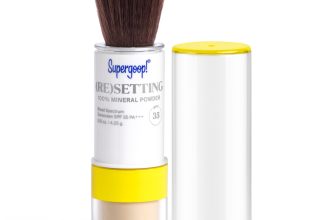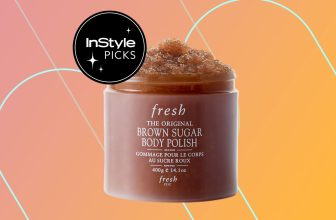How Often to Exfoliate Face
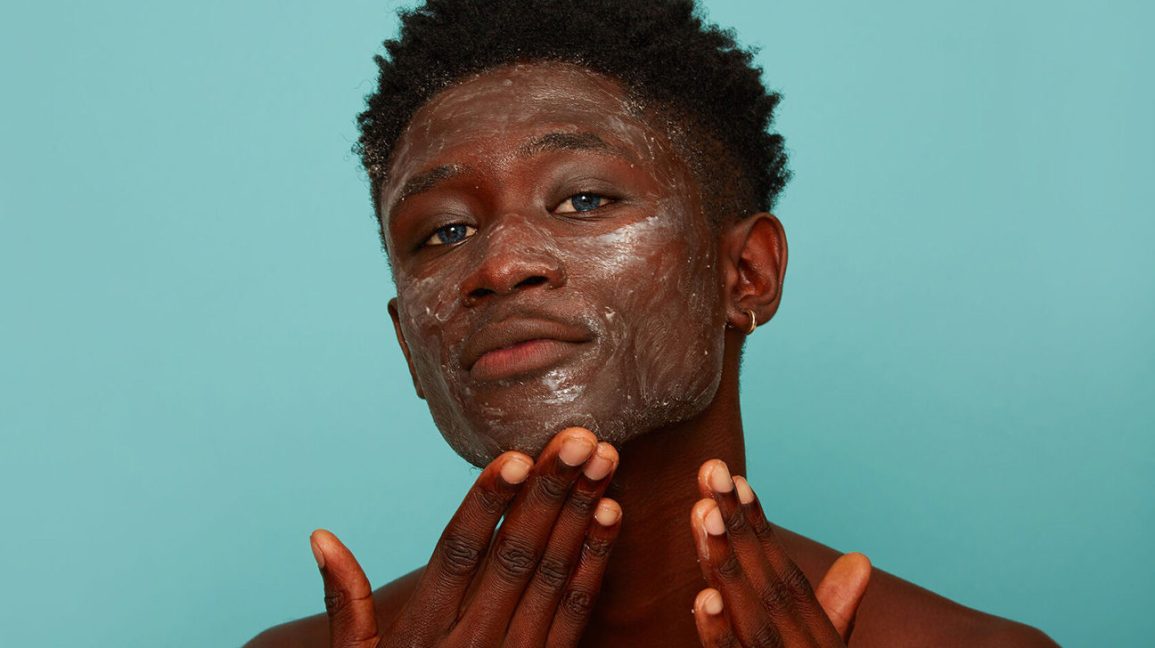
You should exfoliate your face 1-3 times per week, depending on your skin type and exfoliation method. Regular exfoliation helps remove dead skin cells and promote healthy skin renewal.
How Often to Exfoliate Face It can also improve the effectiveness of skincare products and help prevent breakouts. However, over-exfoliating can lead to irritation and sensitivity, so it’s important to find the right balance for your skin. Always follow exfoliation with moisturization and sun protection to maintain skin health.
Exfoliating your face is an essential part of any skincare routine. It helps to remove dead skin cells, unclog pores, and promote a brighter, smoother complexion. However, it’s important to exfoliate in moderation to avoid damaging the skin. Understanding how often to exfoliate your face can help you achieve the best results without causing irritation or sensitivity. Let’s explore the factors that influence the frequency of exfoliation and how to determine the right exfoliation schedule for your skin type.
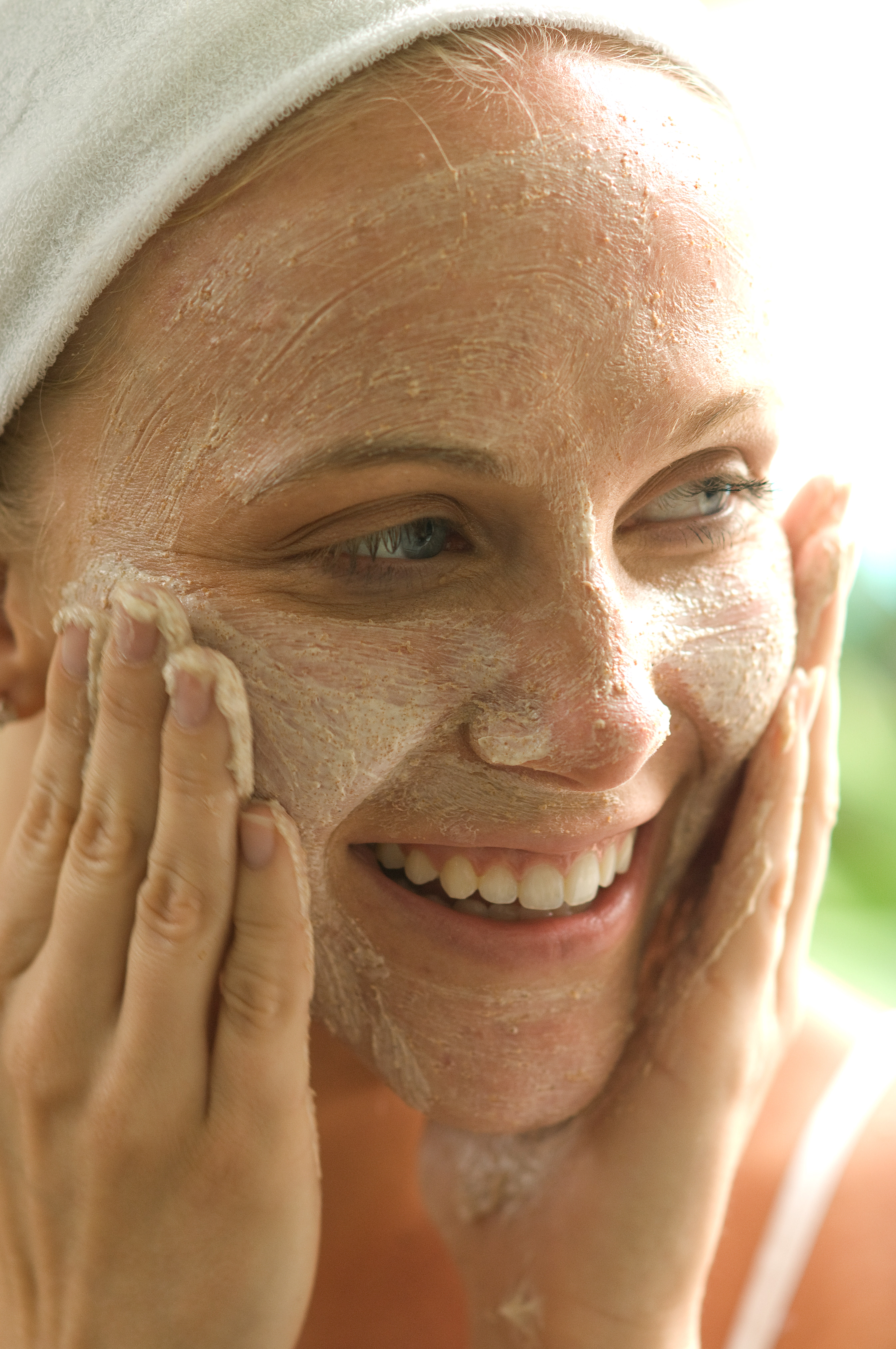
Introduction To Facial Exfoliation
Exfoliating the face is an essential part of any skincare routine. It involves the removal of dead skin cells from the skin’s surface to reveal a smoother, brighter complexion underneath. Understanding the basics of facial exfoliation and the benefits of regular exfoliation is crucial for achieving healthy and radiant skin.
Basics Of Exfoliating Your Face
Exfoliating your face involves using a gentle scrub or chemical exfoliant to slough off dead skin cells. It’s important to choose the right exfoliant based on your skin type and to avoid over-exfoliation, which can lead to irritation and sensitivity.
Benefits Of Regular Exfoliation
- Unclogs pores: Regular exfoliation helps to remove buildup of dirt and oil, preventing clogged pores and acne breakouts.
- Improves skin texture: By removing dead skin cells, exfoliation promotes a smoother and more even skin texture.
- Enhances product absorption: Exfoliating allows skincare products to penetrate more effectively, maximizing their benefits.
- Promotes cell turnover: It stimulates the skin’s natural renewal process, leading to a healthier and more youthful complexion.
Identifying Your Skin Type
Identifying Your Skin Type is crucial for determining how often to exfoliate your face. Understanding your skin type helps tailor your exfoliation routine to match your skin’s specific needs, ensuring optimal results without causing any irritation or damage.
Characteristics Of Different Skin Types
There are generally four main skin types: normal, oily, dry, and combination. Each type has its own distinctive characteristics that influence the exfoliation frequency and method.
How Skin Type Affects Exfoliation Needs
The characteristics of your skin type directly impact how often you should exfoliate. For example, oily skin tends to benefit from more frequent exfoliation to prevent clogged pores, while dry skin requires gentler exfoliation to avoid further dehydration.
Choosing The Right Exfoliation Method
Choosing the right exfoliation method is essential to maintain healthy and glowing skin. Exfoliating too much or too little can cause several skin problems, including irritation and acne breakouts. Therefore, it is crucial to choose the right exfoliation method and frequency according to your skin type and concerns.
Chemical Vs. Physical Exfoliants
There are two types of exfoliants: chemical and physical. Chemical exfoliants use acids such as alpha-hydroxy acids (AHAs) and beta-hydroxy acids (BHAs) to dissolve dead skin cells. Physical exfoliants, on the other hand, use abrasive particles or tools to manually remove dead skin cells.
Both chemical and physical exfoliants have their pros and cons. Chemical exfoliants are gentle and suitable for sensitive skin, but they can be harsh if not used correctly. Physical exfoliants are more effective in removing dead skin cells, but they can be too abrasive and cause damage to the skin.
Popular Exfoliating Products And Tools
There are several popular exfoliating products and tools available in the market. Some of the most common ones include:
| Product/Tool | Description |
|---|---|
| Scrubs | Physical exfoliants that use abrasive particles to remove dead skin cells. |
| Chemical peels | Chemical exfoliants that use acids to dissolve dead skin cells. |
| Exfoliating brushes | Physical exfoliants that use bristles to manually remove dead skin cells. |
| Exfoliating gloves | Physical exfoliants that use textured gloves to manually remove dead skin cells. |
When choosing an exfoliating product or tool, it is essential to consider your skin type and concerns. If you have sensitive skin, it is best to opt for gentle exfoliants such as chemical peels or exfoliating gloves. If you have oily or acne-prone skin, you may benefit from more abrasive exfoliants such as scrubs or exfoliating brushes.
Overall, choosing the right exfoliation method is crucial to achieve healthy and glowing skin. By understanding your skin type and concerns and selecting the appropriate exfoliation product or tool, you can maintain a clear and radiant complexion.

Frequency Of Exfoliation
For optimal skin health, consider exfoliating your face 2-3 times a week. Over-exfoliation can lead to irritation. Adjust frequency based on skin type and sensitivity.
General Guidelines For All Skin Types
Exfoliating your face helps remove dead skin cells, revealing a brighter complexion. The frequency of exfoliation depends on your skin type.
Adjusting Frequency Based On Skin Response
Oily skin: Can exfoliate 2-3 times a week. Dry or sensitive skin: Limit to once a week. Combination skin: 1-2 times per week is suitable.
Step-by-step Guide To Exfoliating
Embark on a journey to rejuvenate your skin with the correct exfoliation frequency. Follow this Step-by-Step Guide to Exfoliating for a radiant complexion.
Preparing Your Skin For Exfoliation
- Cleanse your face with a gentle cleanser to remove impurities.
- Pat your skin dry with a soft towel to ensure it is clean and ready.
- Check for any skin irritations or sensitivities before proceeding.
Proper Exfoliation Techniques
- Choose the right exfoliant for your skin type – physical or chemical.
- Gently massage the exfoliant in circular motions on damp skin.
- Rinse off the exfoliant with lukewarm water and pat dry gently.
- Follow up with a moisturizer to hydrate your skin post-exfoliation.
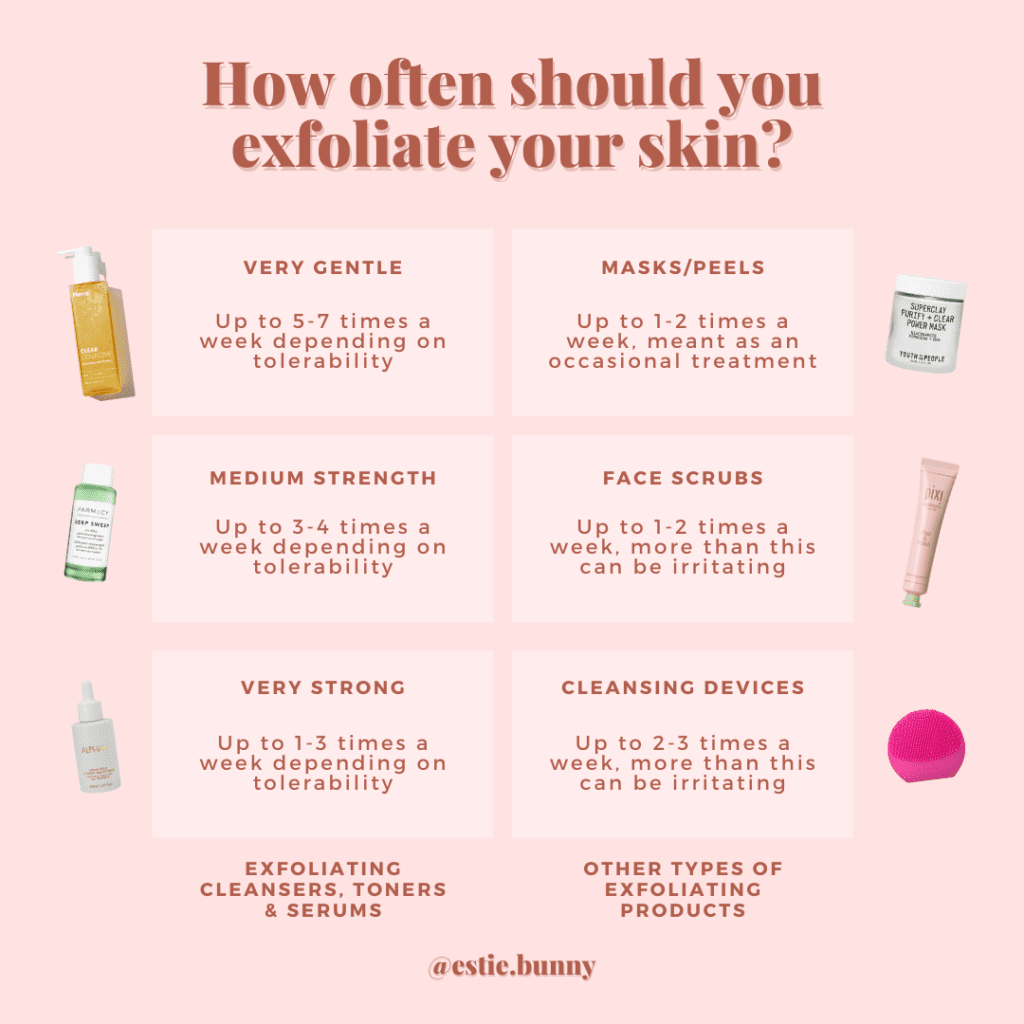
Common Exfoliation Mistakes To Avoid
When considering how often to exfoliate your face, it’s crucial to avoid common mistakes. Over-exfoliation can harm the skin’s barrier function, leading to irritation and sensitivity. Aim to exfoliate 1-3 times per week for a healthy glow without damaging your skin.
Exfoliation is an essential skincare step that helps in removing dead skin cells, unclogging pores, and improving skin texture. However, improper exfoliation can lead to skin irritation, inflammation, and even breakouts. In this section, we will discuss some common exfoliation mistakes you should avoid.
Over-exfoliation Signs And Consequences
Over-exfoliation is one of the most common mistakes people make while exfoliating their face. It refers to the excessive use of exfoliants that can cause damage to the skin. Some signs of over-exfoliation include redness, dryness, flakiness, and increased sensitivity. Excessive exfoliation can strip away the natural oils from your skin, leading to dryness and irritation. It can also disrupt the skin barrier, making your skin more vulnerable to environmental stressors and harmful bacteria.
Inappropriate Exfoliant Selection
Choosing the wrong exfoliant for your skin type can also lead to skin problems. Some exfoliants are too harsh for sensitive skin, while others may not be effective for oily or acne-prone skin. For instance, physical exfoliants like scrubs can be too abrasive for sensitive skin, causing irritation and redness. On the other hand, chemical exfoliants like AHAs and BHAs can be too strong for dry skin, leading to flakiness and peeling. To avoid this mistake, it’s important to choose an exfoliant that suits your skin type and concerns. If you’re not sure which exfoliant to use, consult a dermatologist or skincare expert. Exfoliation is a crucial step in any skincare routine, but it’s important to do it correctly to avoid skin damage. By avoiding these common exfoliation mistakes, you can achieve a smoother, healthier, and more radiant-looking skin.
Aftercare And Skin Protection
After exfoliating your face, it’s crucial to prioritize aftercare and skin protection to maintain the health and appearance of your skin. Following a proper aftercare routine can help to soothe and protect your skin, allowing you to reap the full benefits of exfoliation.
Mositurizing After Exfoliating
Moisturizing is a key step in the aftercare process. After exfoliation, the skin is more receptive to hydration, making it an ideal time to apply a nourishing moisturizer. Opt for a lightweight, non-comedogenic moisturizer to prevent clogged pores, and choose products that contain hydrating ingredients such as hyaluronic acid or glycerin.
Sun Protection And Exfoliated Skin
Sun protection is essential, especially after exfoliation, as the skin is more susceptible to sun damage. Apply a broad-spectrum sunscreen with an SPF of 30 or higher to shield your exfoliated skin from harmful UV rays. Reapply sunscreen every two hours, and more frequently if sweating or swimming.
Personalizing Your Exfoliation Routine
Achieving the right balance is key. For most skin types, exfoliating 2-3 times a week is ideal. However, it’s essential to listen to your skin’s needs and adjust accordingly. Over-exfoliating can lead to irritation, so be mindful of your skin’s response.
Adjustments For Changing Seasons And Environments
It’s essential to adapt your exfoliation routine based on the changing seasons and environmental factors. During the winter, when the air is drier, reduce the frequency of exfoliation to prevent over-drying the skin. In contrast, increase the frequency during the summer to combat oil buildup and sweat. Pay attention to your skin’s needs and adjust accordingly.
When To Consult A Dermatologist
If you experience persistent redness, irritation, or unusual skin reactions after exfoliation, it’s crucial to seek advice from a dermatologist. Consult a professional if you have sensitive skin or conditions like eczema or rosacea. They can provide personalized recommendations and help prevent any potential damage to your skin.
Frequently Asked Questions
Is It Ok To Exfoliate Your Face Daily?
Exfoliating your face daily can be too harsh, leading to irritation and damage. It’s best to exfoliate 2-3 times a week for healthy skin.
Is It Better To Exfoliate At Night Or In The Morning?
Exfoliating in the morning helps remove dead skin cells and unclog pores for a fresh complexion. At night, exfoliation can aid in cell turnover and repair while you sleep. Ultimately, choose the time that fits best with your skincare routine and preferences.
How Often Should A Woman Exfoliate Her Face?
For optimal results, a woman should exfoliate her face 2-3 times per week. Over-exfoliation can damage the skin.
Should I Moisturize After Exfoliating?
Yes, moisturizing after exfoliating is essential to restore hydration and nourish the skin. Exfoliation can strip natural oils, so moisturizing helps maintain a healthy skin barrier. Choose a non-comedogenic moisturizer suitable for your skin type for best results.
Conclusion
Finding the right exfoliation frequency is crucial for healthy skin. Listen to your skin’s needs and adjust your routine accordingly. Consistency is key to reaping the benefits of exfoliation without causing harm. Remember, moderation and gentle care are essential for a glowing complexion.



